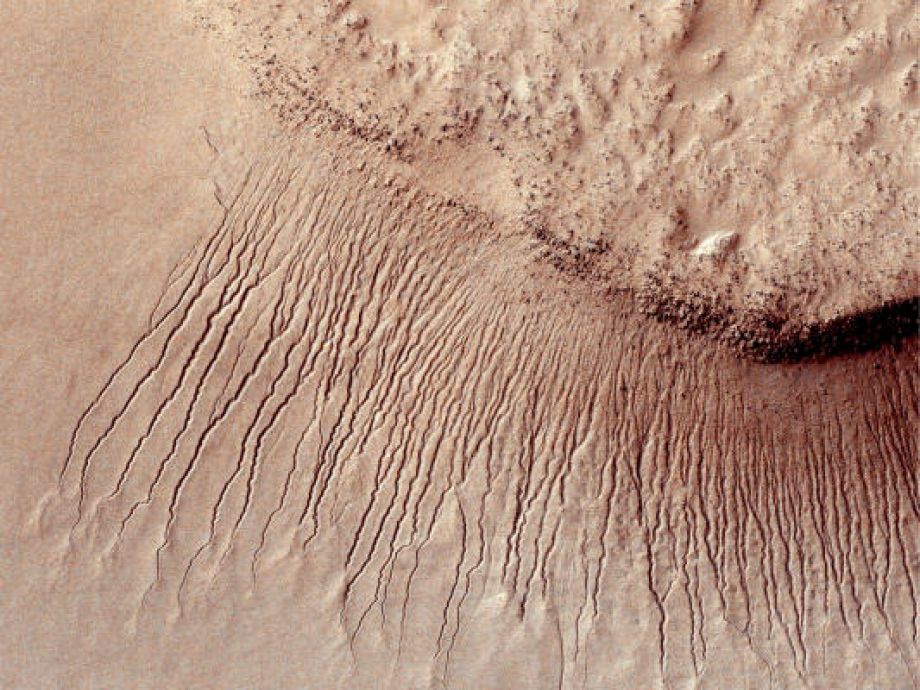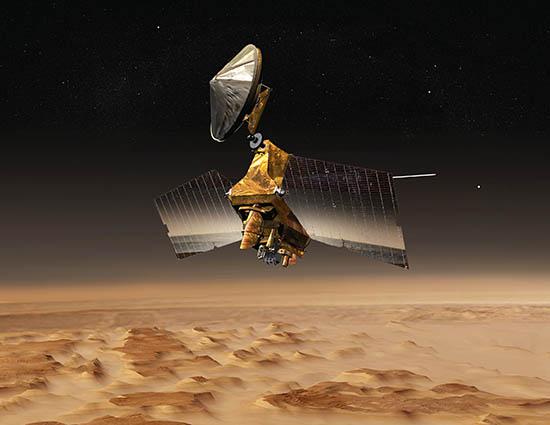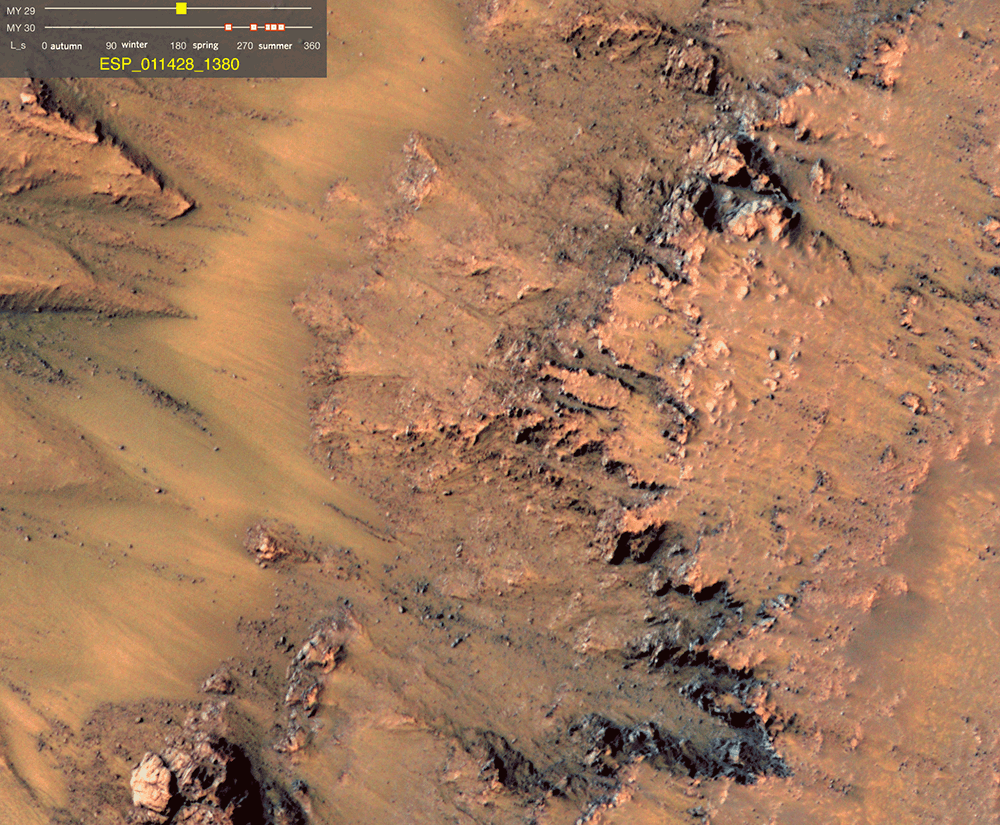 On the red planet, in summer, very salty water flows down the slopes of some regions of the surface of Mars.
On the red planet, in summer, very salty water flows down the slopes of some regions of the surface of Mars.
This is the proposal of a team of scientists led by Alfred McEwen, principal investigator of the Scientific Experiment of High Resolution Imaging, a device that belongs to the Mars Reconnaissance Orbiter — the NASA spacecraft that has been orbiting Mars since 2006 — and which provided the data to support the claim of the discovery of liquid salt water on Mars.
The media impact of this discovery was enormous on a terrestrial planetary scale. Water is inseparable from the development and support of life on our planet, the only one we know where there is life, like ours.
The discovery of water movements on the neighboring planet, even if associated with salts, feeds the idea, not new, of the possibility that life at least once existed on Mars. But this remains a hypothesis that needs experimental data and evidence.
Many theories have been proposed in recent centuries about the existence of water on Mars. The most famous and the one that most fueled the imagination and fiction about the possibility of the existence of life, including intelligent, on Mars, was the one elaborated by the American amateur astronomer Percival Lowell in the late nineteenth century.
In his book “Mars”, published in 1895, Lowell presents the idea of the presence of an irrigation network to distribute the scarce water resources of Mars.
Based on telescopic observations of the surface of Mars, Lowell proposes a dynamics for the flow of water from polar ice caps modeled by Martian stations. He even writes: “There is water on the surface of Mars. But we can also mark this body of water as ephemeral. It only exists when the ice caps melt and suddenly disappear”.
Thus, we see that the idea that there is water on Mars and that it is scarce is not new. But what is now new is that it has been identified scientifically and experimentally.

In an article published on September 28, 2015, in the magazine “Nature Geoscience” (http://www.nature.com/ngeo/journal/vaop/ncurrent/full/ngeo2546.html), and whose first author is Lujendra Ojha, the scientists of the aforementioned experiment present the results of spectral analyzes on dark streaks present in hills and slopes on the surface of Mars, discovered in 2011. These streaks appear and disappear in a cyclic manner, all the years old.
“Our findings strongly support the hypothesis that lines that periodically appear on slopes form due to contemporary water activity on Mars,” reads the article's abstract.
The team of scientists used the data obtained in those streaks by a powerful imaging spectrometer present on the probe “Mars Reconnaissance Orbiter”. This equipment analyzed the light reflected in those dark streaks and identified the substances in them.
The data obtained support the existence of a certain type of hydrated salts. The presence of these hydrated salts is due to their precipitation from very salty liquid water, which exists during the hottest hours of summer days, argue the scientists in that article.
But how can there be liquid water on Mars if its average temperature is around minus 63 degrees Celsius? We know that when there are salts dissolved in water, the temperature at which it changes from a liquid to a solid state lowers (in fact, certain species of life on Earth use this stratagem to keep water in a liquid state at temperatures below 0 degrees Celsius ).
Scientists calculate that, with certain substances, frozen water melts at minus 70 degrees. Thus, it becomes understandable the possibility that there may be liquid water on Mars, in the hottest season and in more equatorial areas. This is supported by the data presented in the article now published.
This discovery will direct future investigations into the possibility that life exists or has ever existed on Mars, towards these dark striated areas of the Martian surface.
A lot about this Martian context, I refer to the publication between us last June 2015 of the book “Os Marcianos Somos Nós”, by Nuno Galopim.
Published in the prestigious “Ciência Aberta” collection by Gradiva publishing house, this is an indispensable book for anyone who wants to get a complete picture of Mars, from science to literature, from comics to cinema.
Author Antonio Piedade
Science in the Regional Press – Ciência Viva
Image of salt water runoff in Crater Newton on Mars:
(Source: NASA)



















Comments